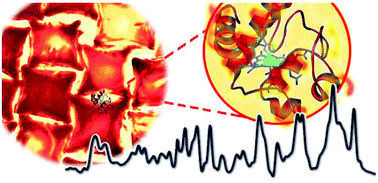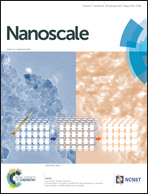Concave gold nanocube assemblies as nanotraps for surface-enhanced Raman scattering-based detection of proteins†
Abstract
SERS detection of proteins is typically performed by using labeling agents with stable and high Raman scattering cross sections. This is a valuable approach for trace detection and quantification of a target protein but is unsuitable for inspecting its inherent structural and functional properties. On the other hand, direct SERS of proteins has been mainly devoted to the study of short peptides and aminoacid sequences or of prosthetic groups with intense Raman signals, which is of scarce interest for a thorough characterization of most proteins. Here we try to overcome these limitations by setting-up an effective platform for the structural SERS analysis of proteins. The platform consists of an extended bidimensional array of gold concave nanocubes (CNCs) supported on a PDMS film. CNCs are closely-packed through face–face and face–corner interactions generating a monolayered arrangement featuring well distributed nanoholes. Here the protein homogeneously experiences an E-field enhancement outward from the metal surfaces surrounding it, which causes a large number of vibrations to be contemporarily amplified. The proposed platform provides stable and detailed SERS spectra and confers rapidity and reproducibility to the analysis.


 Please wait while we load your content...
Please wait while we load your content...